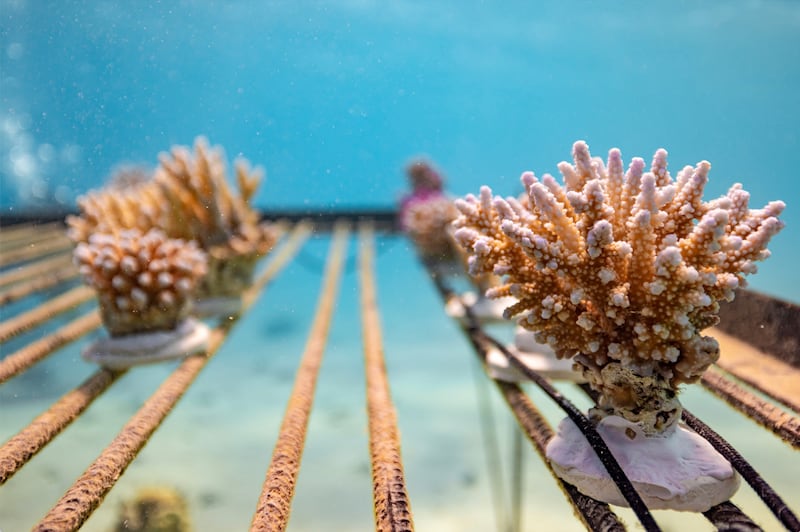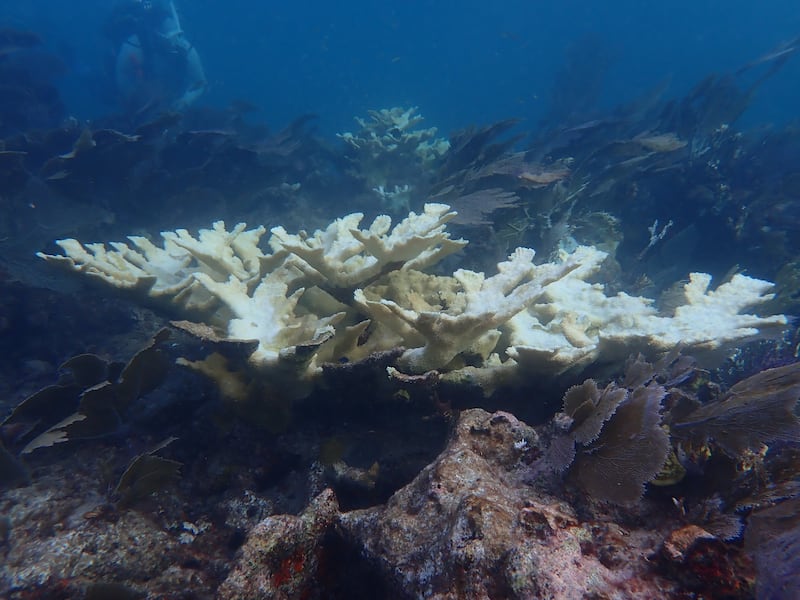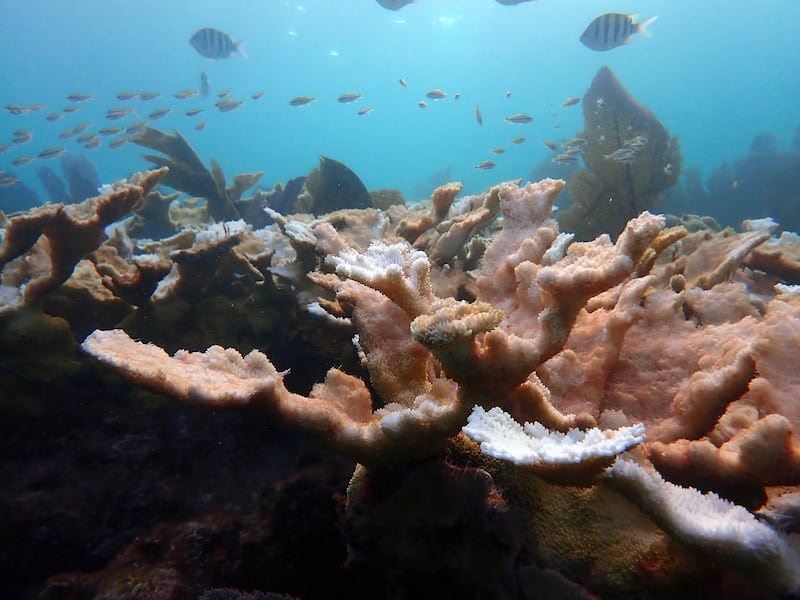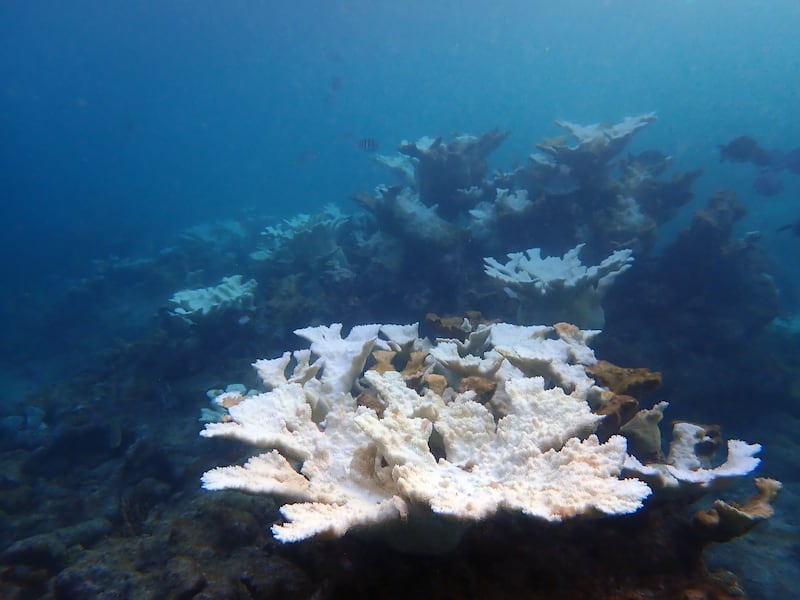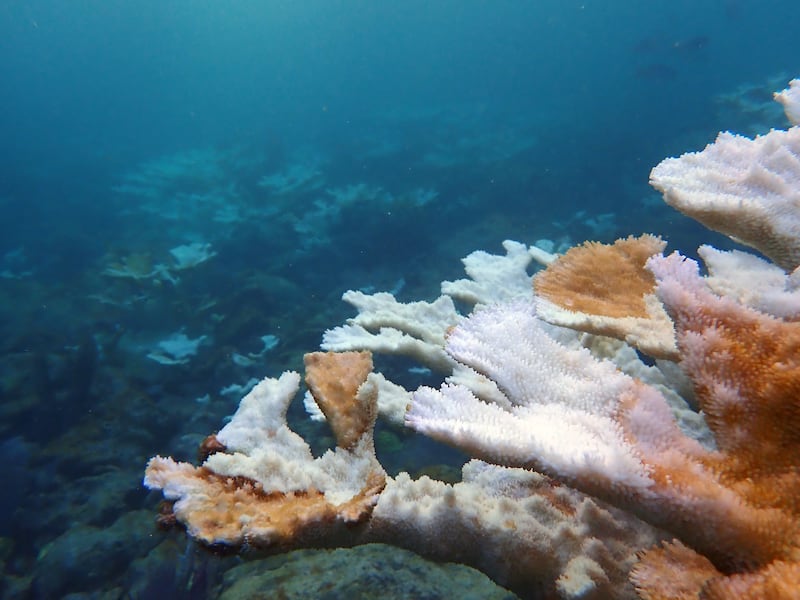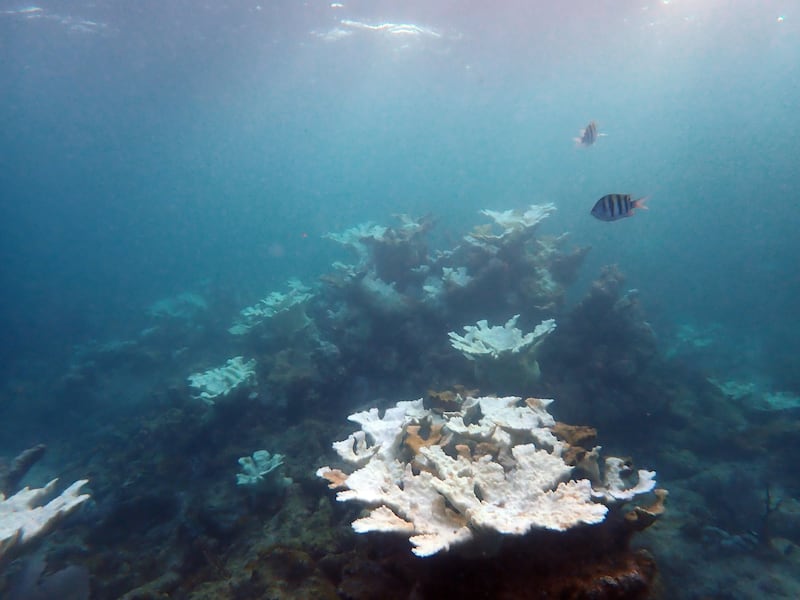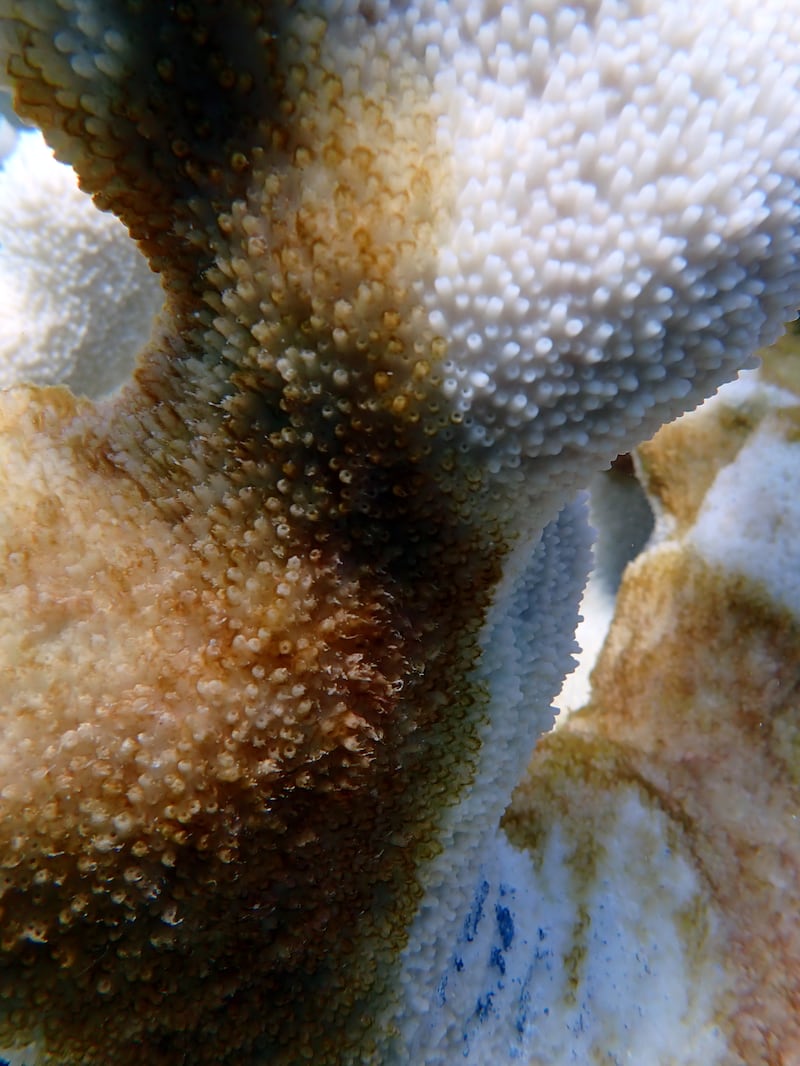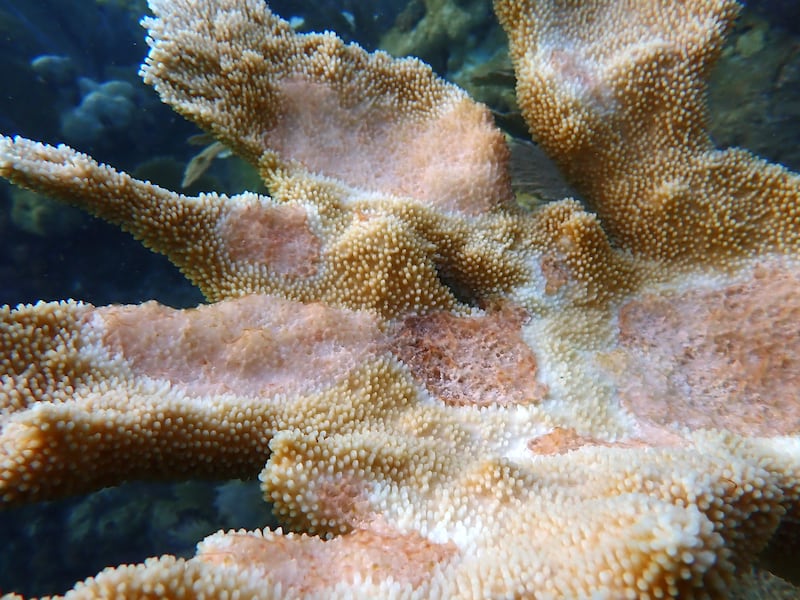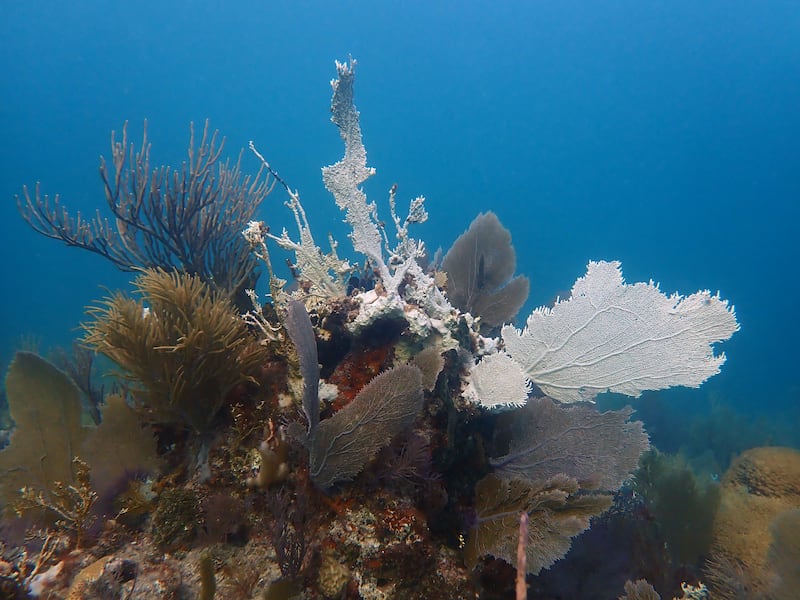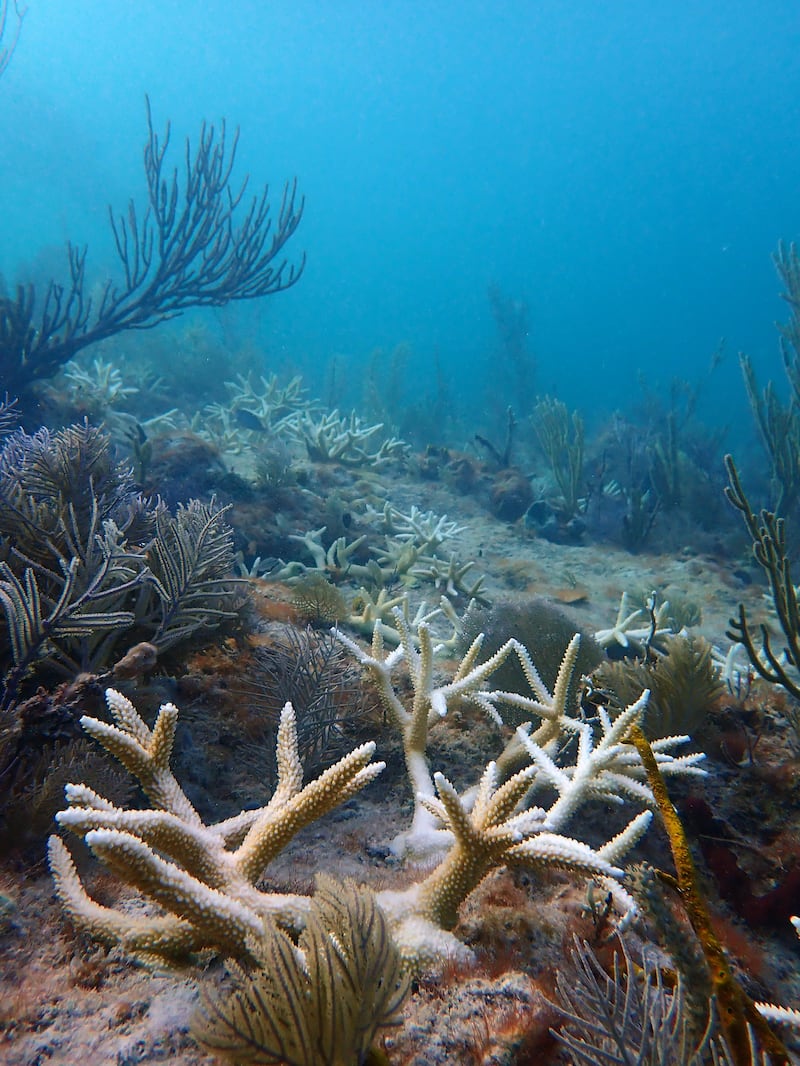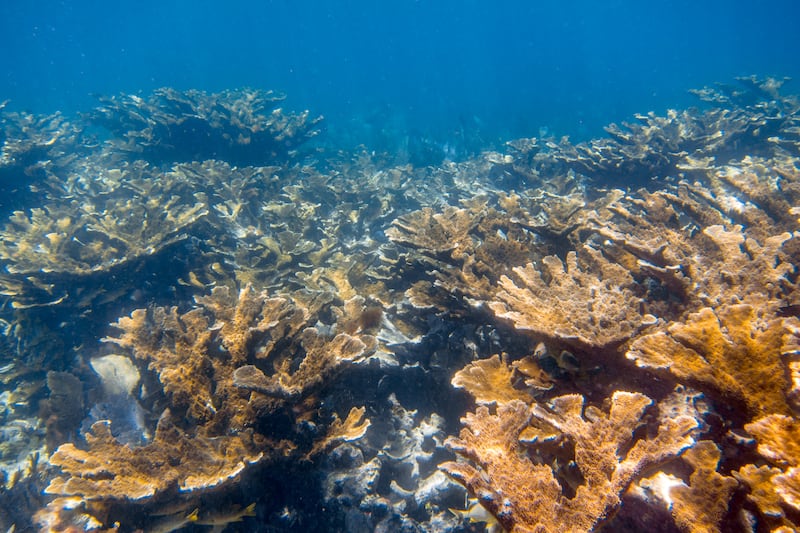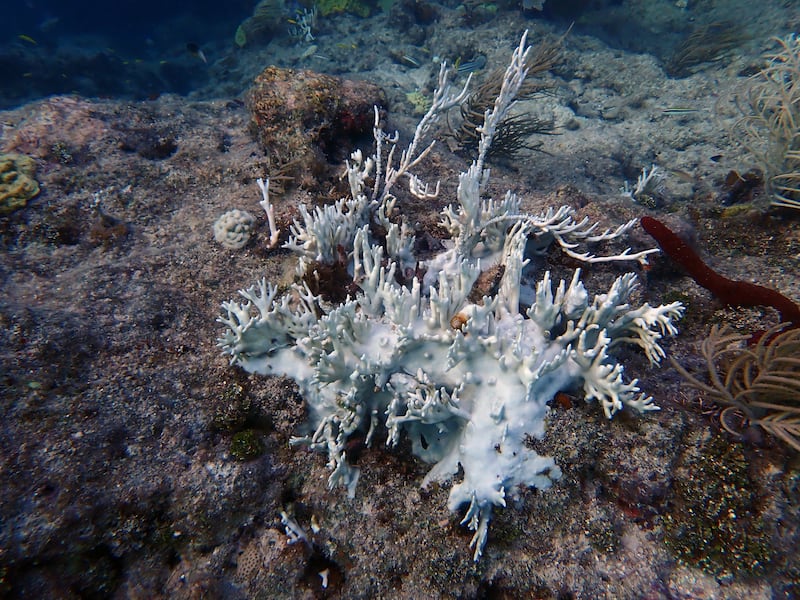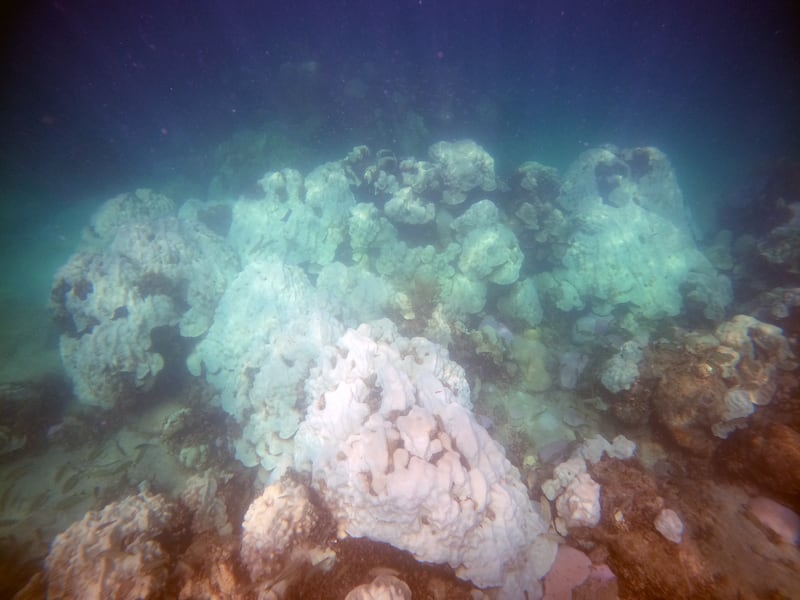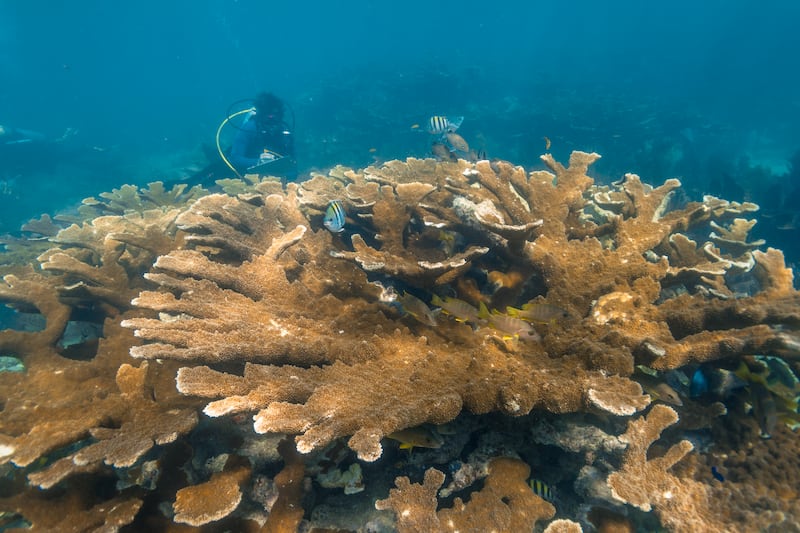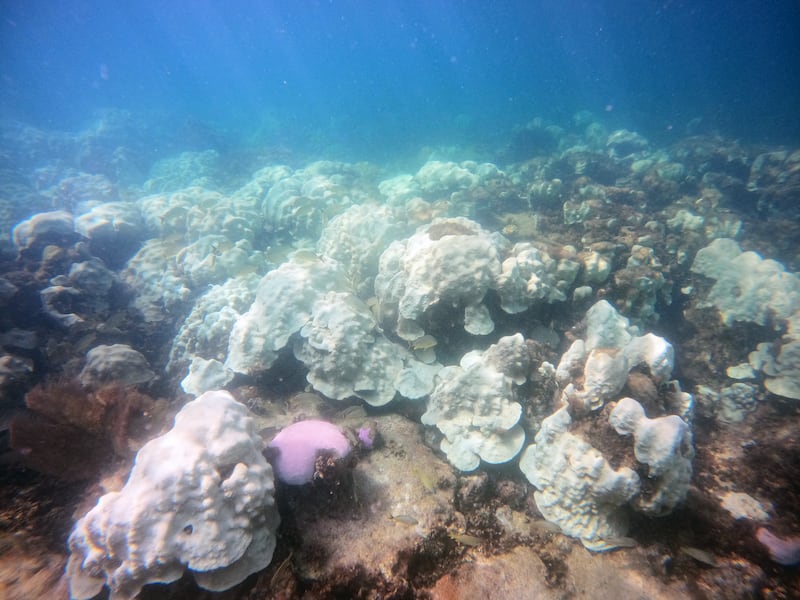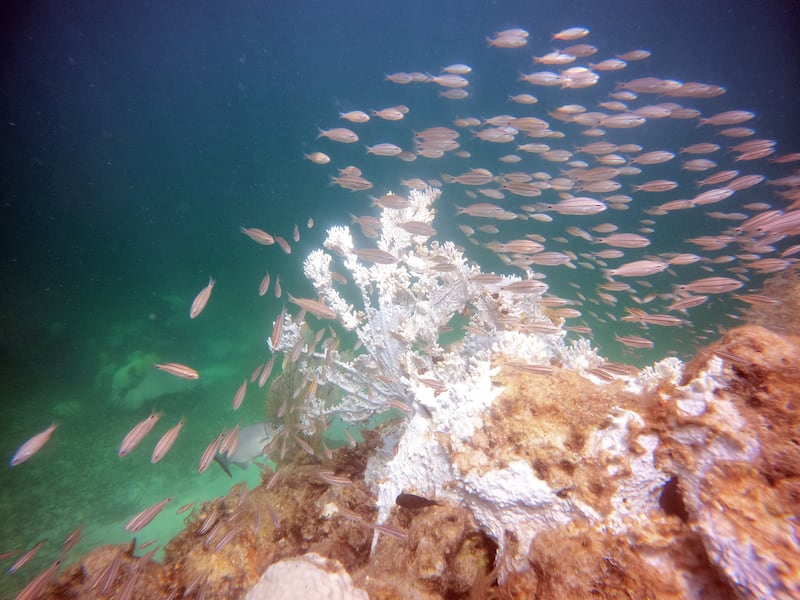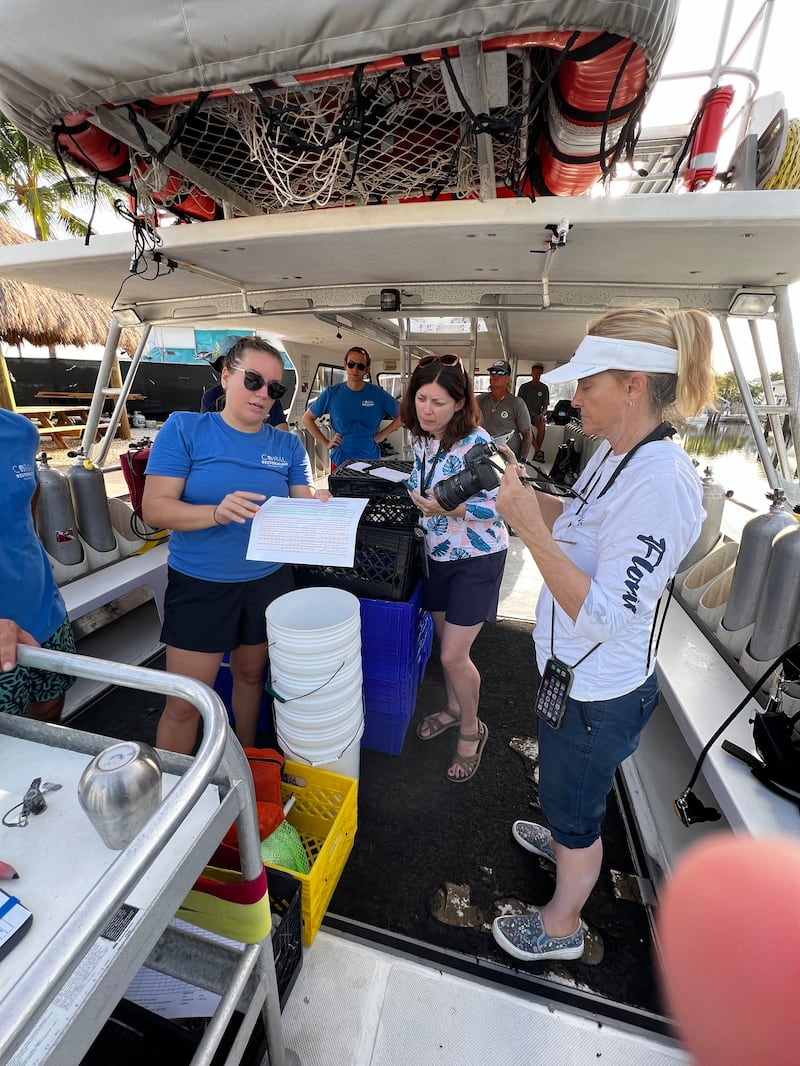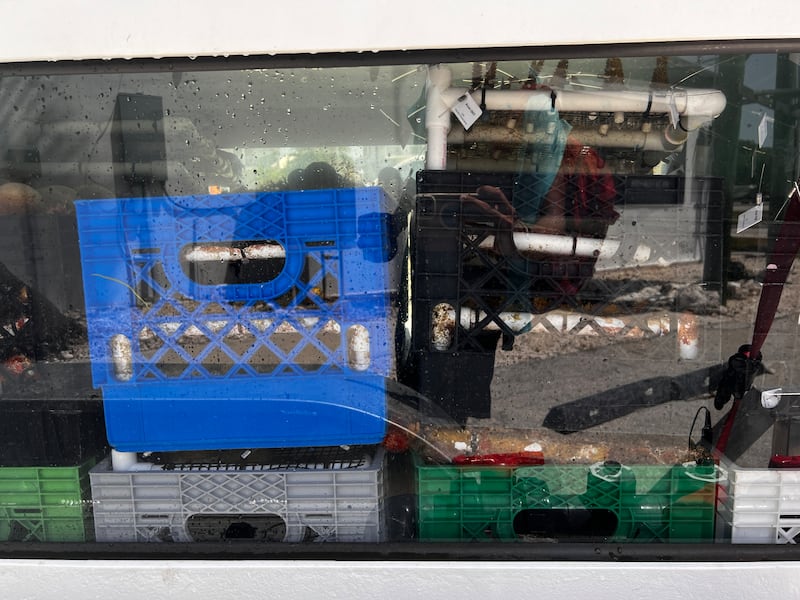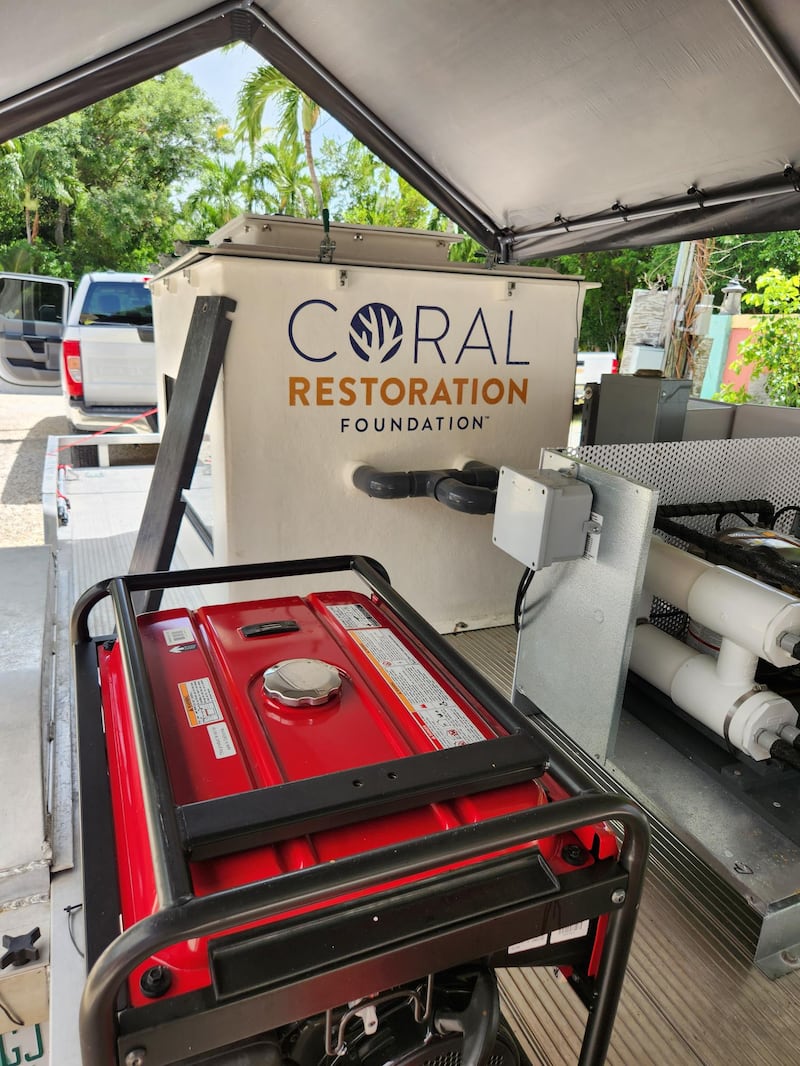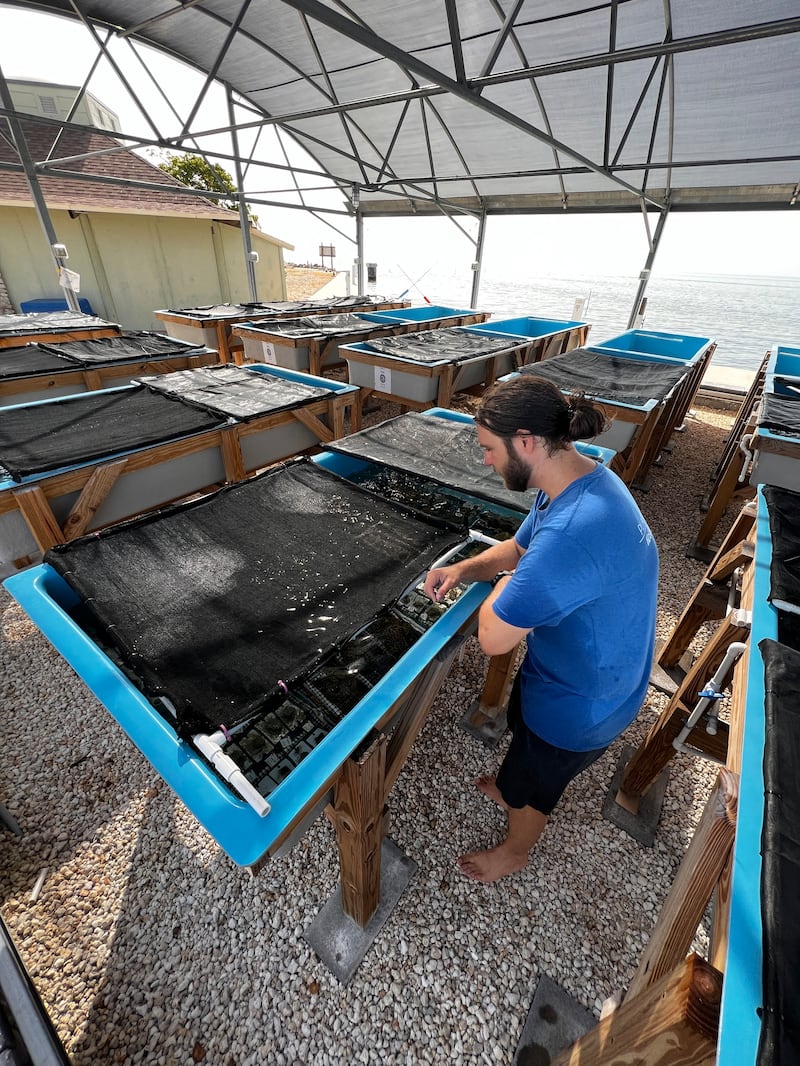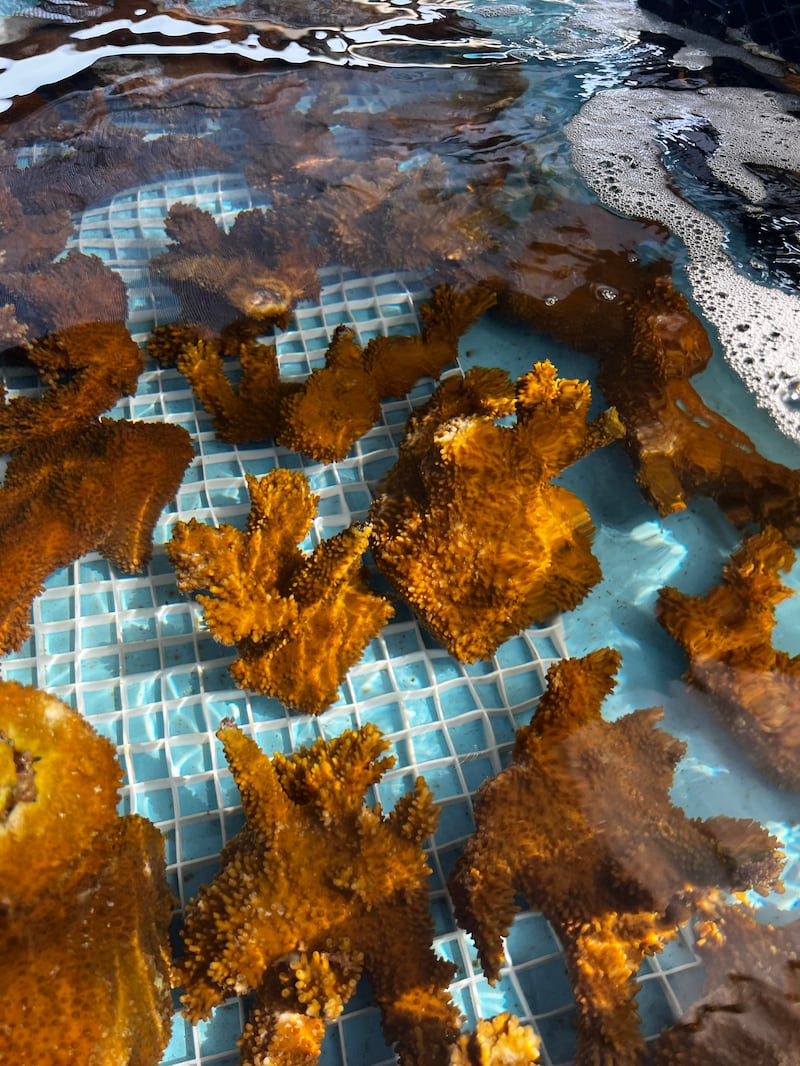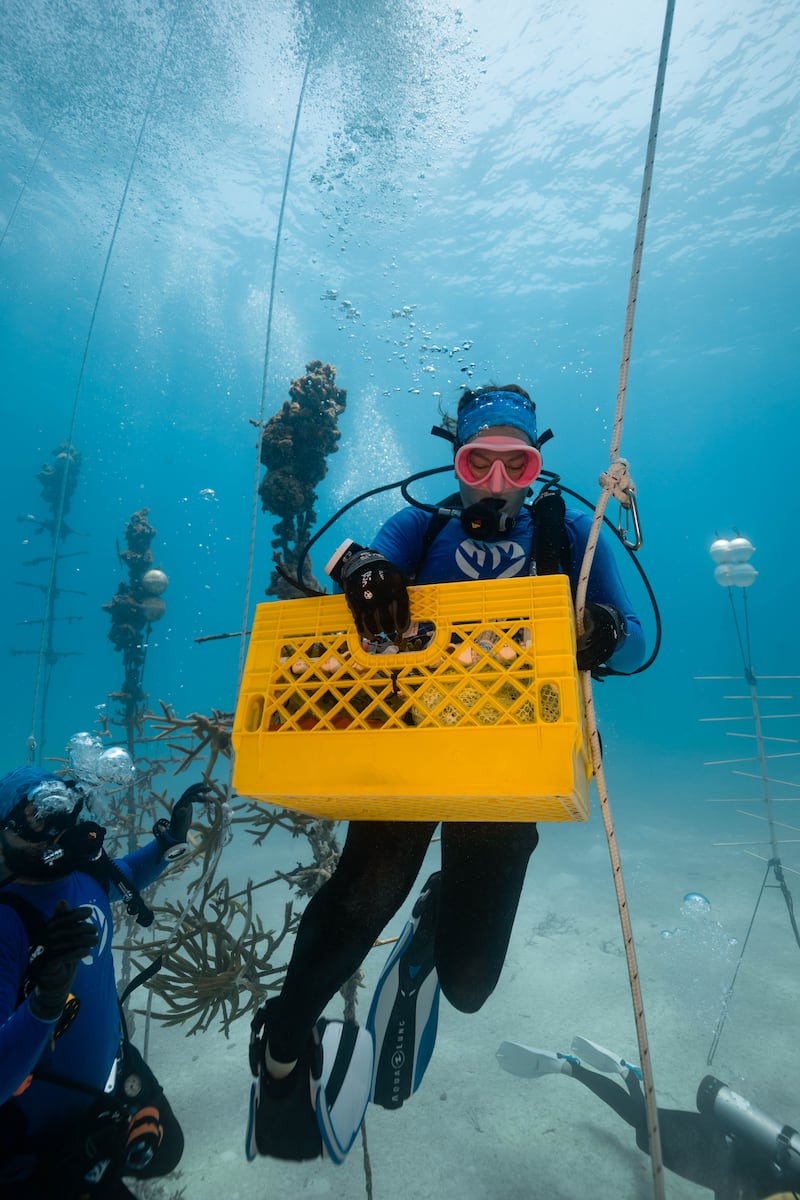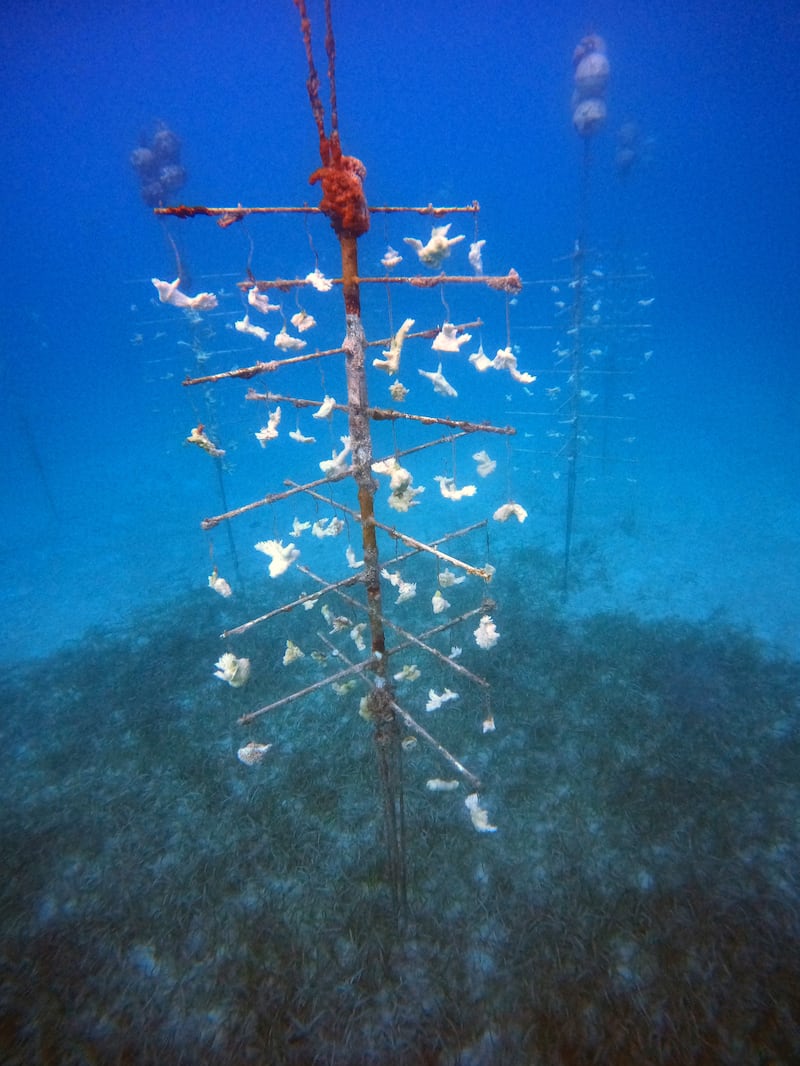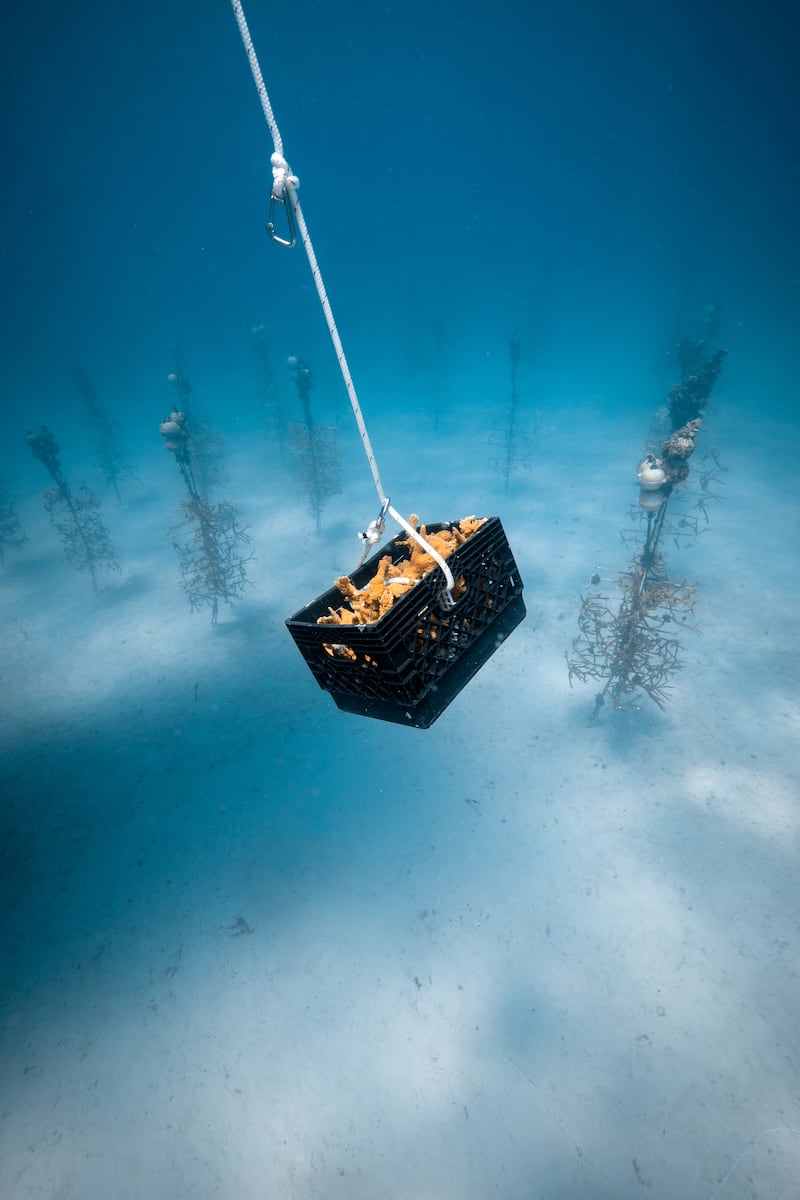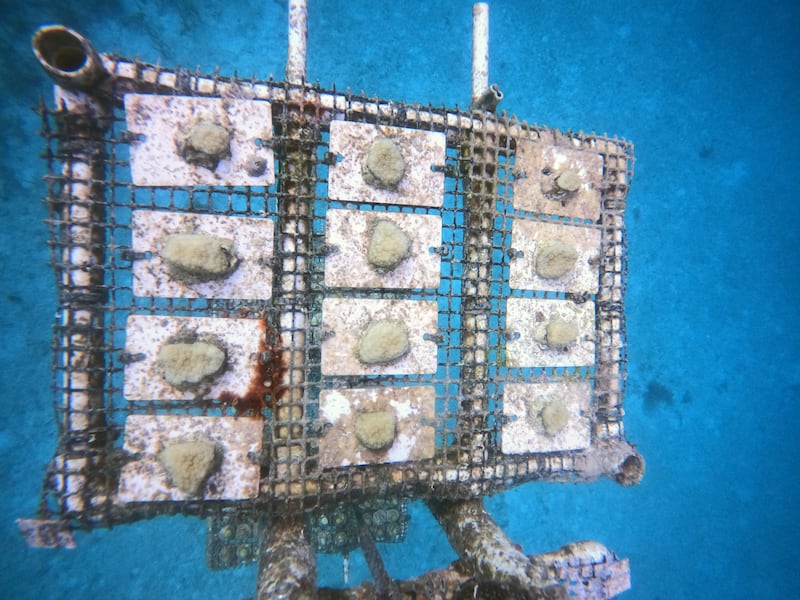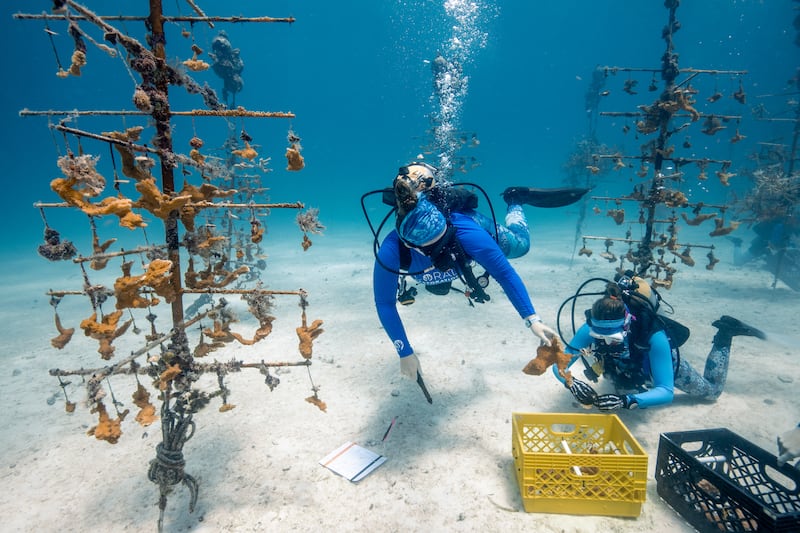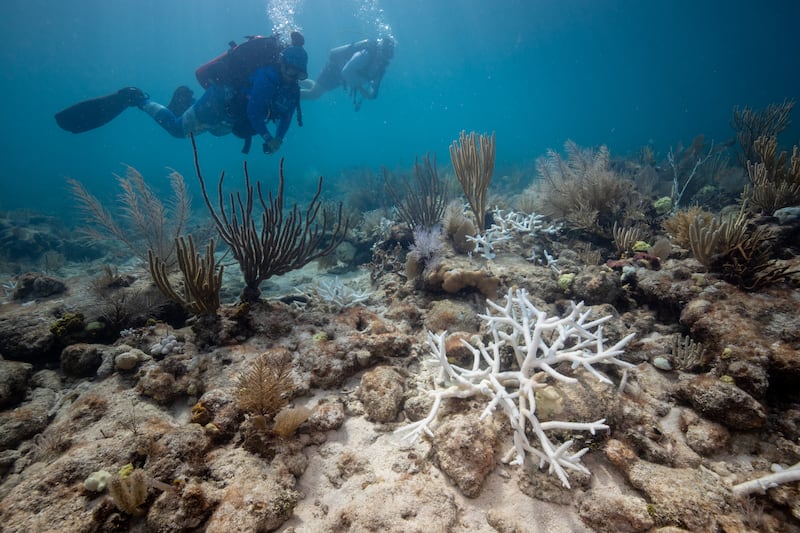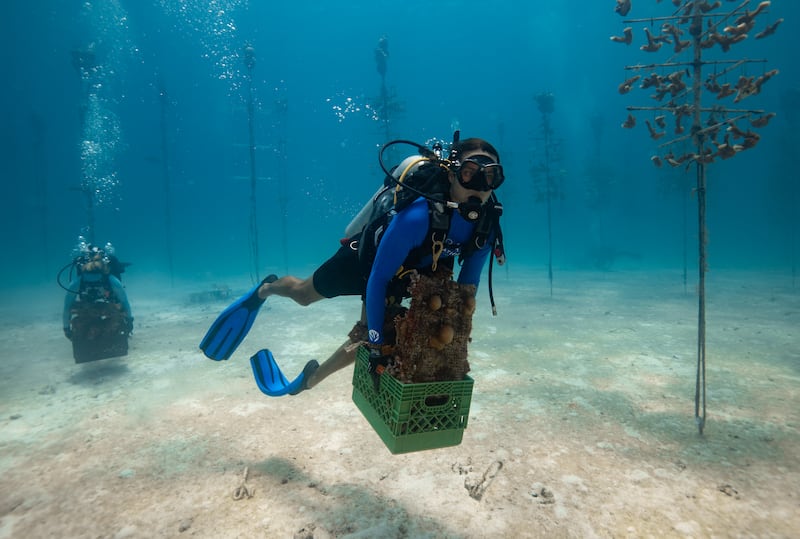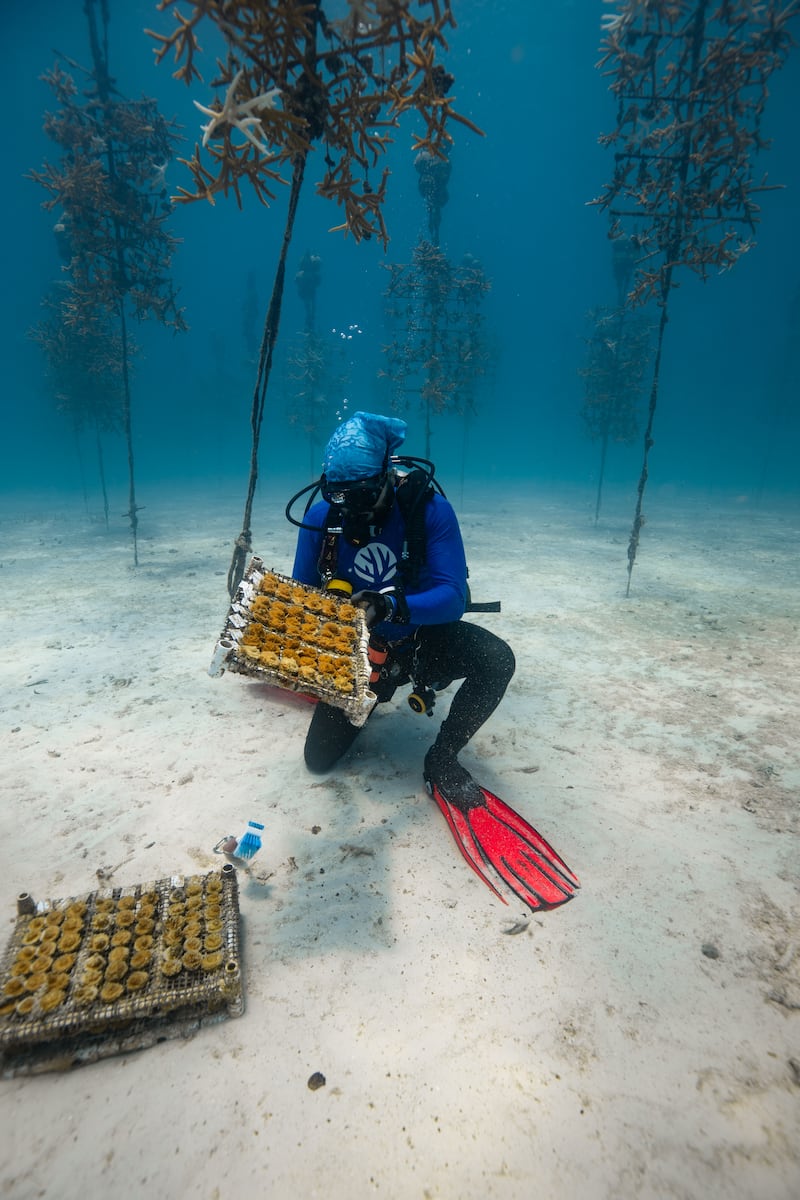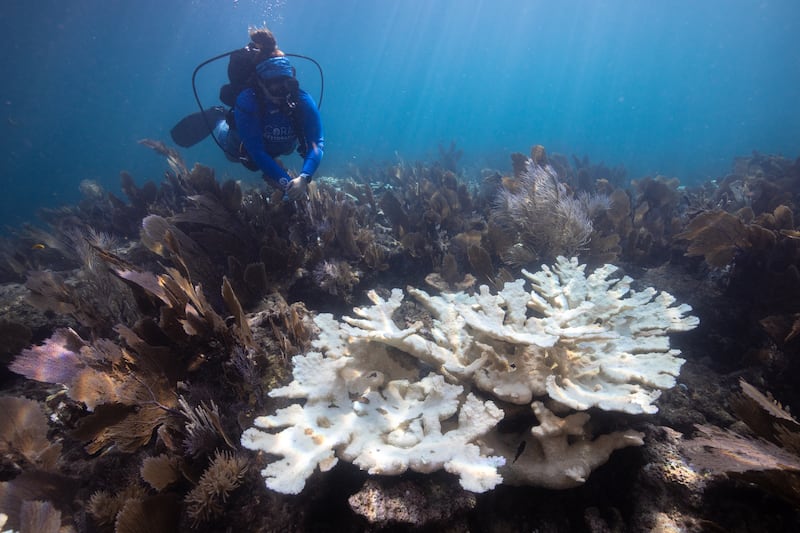One of Saudi Arabia's top universities has announced a Red Sea project described as the world’s largest coral reef restoration.
The King Abdullah University of Science and Technology initiative aims to produce hundreds of thousands of corals each year.
The scheme “represents a significant step towards restoring reefs globally”, according to the university, and is seen as important because many reefs have suffered from bleaching events due to rising temperatures.
Called the Kaust Coral Restoration Initiative, the project already has a functioning nursery on Saudi Arabia’s north-west Red Sea coast capable of generating 40,000 corals per year.
It is a pilot project for a larger scheme set to be completed by the end of next year, with an annual capacity of 400,000 corals.
Turning back the tide
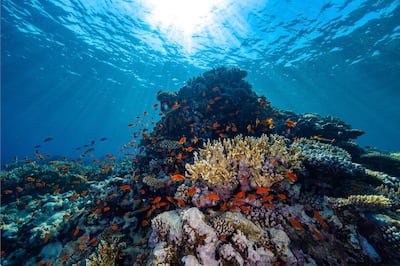
Coral nurseries like the one that Kaust has created involve coral fragments being placed on what are sometimes compared to clothes lines.
Once they have grown, nursery-developed corals can be transplanted to other areas, such as to coral reefs that have suffered damage.
As recently reported, the US National Oceanic and Atmospheric Administration (NOAA) has said that the world’s coral reefs are experiencing a major bleaching event.
Corals in the Arabian Gulf, the Red Sea, the Great Barrier Reef and the Caribbean are among the many affected.
Bleaching happens when high temperatures – or unusually low temperatures – cause corals to expel single-celled algae called zooxanthellae that live inside them in, depriving the corals of a key energy source.
When the zooxanthellae are expelled, the reefs turn white, although the corals may regain their zooxanthellae and get back their colour.
Addressing coral crisis
Bleaching has become increasingly common in recent decades, making it harder for corals to recover.
Prof Tony Chan, Kaust’s president, said that recent events offered “a stark reminder” of the “global crisis” faced by coral reefs.
“Our ambition is, therefore, to pioneer a pathway to upscale from the current labour-intensive restoration efforts to industrial-scale processes required to reverse the current rate of coral reef degradation,” he said.
“ The university is contributing the world-leading expertise of our faculty, who are working on technologies to bring this vision to fruition.”
Kaust said that its project, being created at Neom, Saudi Arabia’s under-construction $500 billion megacity, covers 100 hectares and will trial “innovative restoration methods” as it deploys two million coral fragments.
Nadhmi Al Nasr, the chief executive of Neom, said that the scheme reflected the city’s “commitment to sustainability and to innovating solutions for the environmental challenges facing the world”.
“Reviving the vital sites of coral reefs is a natural step in our partnership with Kaust,” he added.
“Through our long-standing partnership with the university, we will also highlight the role of coral reefs, among the most important marine environmental systems, and the value of their preservation for future generations.”
The UAE too carries out coral restoration work, with the Environment Agency – Abu Dhabi having been rehabilitating reefs since 2021.
As with the Kaust project, this involves corals being grown in a nursery before being transferred to reef areas. By late last year more than 300,000 coral fragments had been transplanted to four sites.
Another initiative, involving scientists at New York University Abu Dhabi, involves cross-breeding heat-tolerant corals with types from cooler environments that are experiencing temperature increases. The cross-bred corals produced are better able to cope with high temperatures than purebred types.
A separate project to help corals cope with increasing temperatures, tested by researchers in Australia, involves shading reefs.
Aside from rising temperatures, other threats facing corals include ocean acidification – which is caused by carbon emissions – along with the effects of shipping, coastal development, fishing and pollution.
